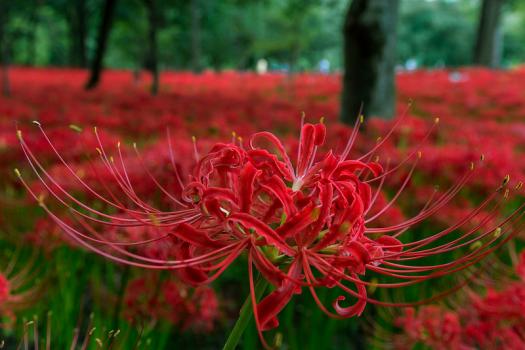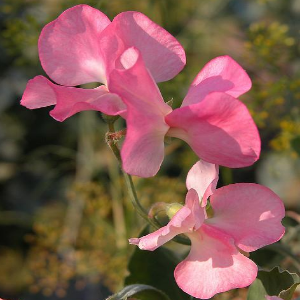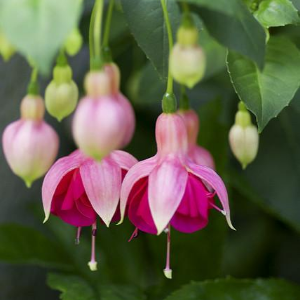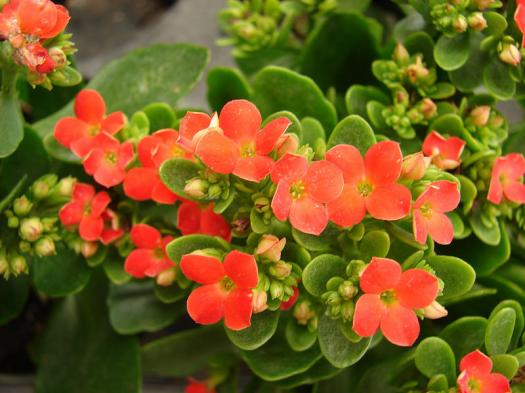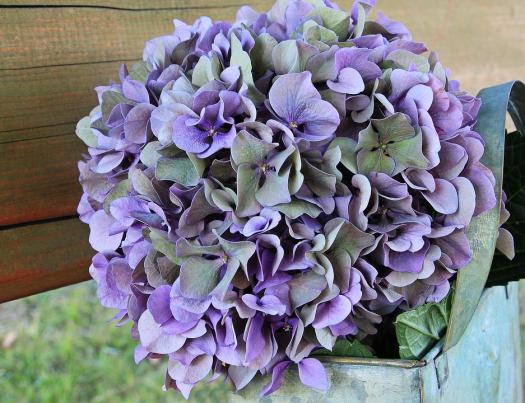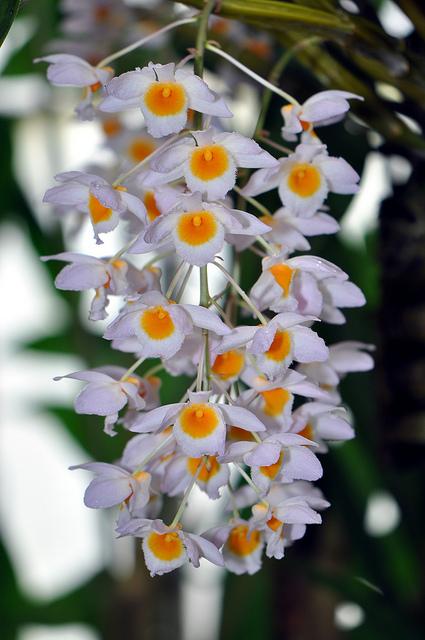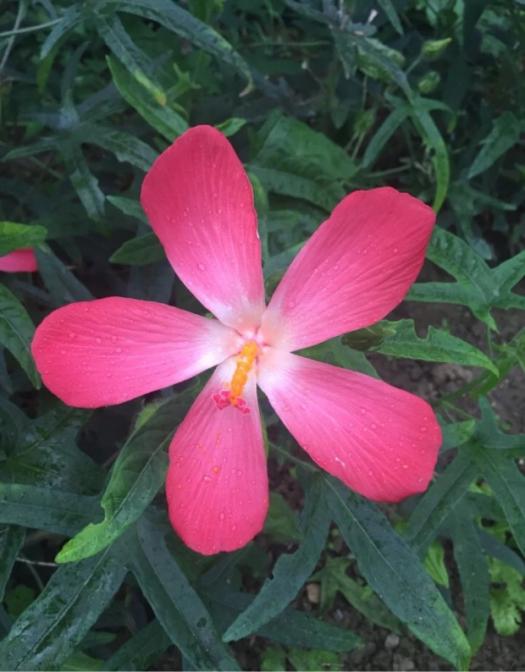Can You Identify These Flowers? Are You An Expert On Plants?

Test your expertise on plant identification with this engaging quiz. Dive into recognizing various flowers like Lily of the Valley, Red spider lily, and more. Ideal for enhancing botanical knowledge and perfect for learners interested in floriculture.
- 1.
What's this flower?
- A.
Lily of the Valley (Convallaria majalis)
- B.
English daisy (Bellis perennis)
- C.
Jasmine (Genus Jasminum)
- D.
Bull clover (Trifolium fucatum)
Correct Answer
A. Lily of the Valley (Convallaria majalis)Explanation
Lily of the valley (Convallaria majalis /ˌkɒnvəˈleɪriə məˈdʒeɪlɪs/), sometimes written lily-of-the-valley, is a highly poisonous woodland flowering plant with sweetly scented, pendent, bell-shaped white flowers borne in sprays in spring. It is native throughout the cool temperate Northern Hemisphere in Asia and Europe.
It is possibly the only species in the genus Convallaria in the asparagus family.
Other names include May bells, Our Lady's tears, and Mary's tears. Its French name, muguet, sometimes appears in the names of perfumes imitating the flower's scent.Rate this question:
-
- 2.
Do you know this flower?
- A.
Geranium family (Family Geraniaceae)
- B.
Windflowers (Genus Anemone)
- C.
Red spider lily (Lycoris radiata)
- D.
Honeysuckles (Genus Lonicera)
Correct Answer
C. Red spider lily (Lycoris radiata)Explanation
Lycoris radiata, known as red spider lily, red magic lily, or equinox flower, is a plant in the amaryllis family, Amaryllidaceae, subfamily Amaryllidoideae. Originally from China, Korea, and Nepal, it was introduced into Japan and from there to the United States and elsewhere. It is considered naturalized in Seychelles and in the Ryukyu Islands. It flowers in the late summer or autumn, often in response to heavy rainfall. The common name hurricane lily refers to this characteristic, as do other common names, such as resurrection lily; these may be used for the genus as a whole.Rate this question:
-
- 3.
This flower is common, do you know its name?
- A.
Irises (Genus Iris)
- B.
Moth orchids (Genus Phalaenopsis)
- C.
Violets (Genus Viola)
- D.
Calla lily (Zantedeschia aethiopica)
Correct Answer
B. Moth orchids (Genus Phalaenopsis)Explanation
Phalaenopsis /ˌfælɪˈnɒpsɪs/ Blume (1825), commonly known as moth orchids, is a genus of about seventy species of orchids in the family orchid. Orchids in this genus are monopodial epiphytes or lithophytes with long, coarse roots, short, leafy stems and long-lasting, flat flowers arranged in a flowering stem that often branches near the end. Orchids in this genus are native to India, China, Southeast Asia, New Guinea and Australia with the majority in Indonesia and the PhilippinesRate this question:
-
- 4.
It's a kind of popular wedding flower, can you identify it?
- A.
Wild daffodil (Narcissus pseudonarcissus)
- B.
Freesia (Genus Freesia)
- C.
Common dandelion (Taraxacum officinale)
- D.
Sweet Peas (Genus Lathyrus)
Correct Answer
D. Sweet Peas (Genus Lathyrus)Explanation
The sweet pea (Lathyrus odoratus) is a flowering plant in the genus Lathyrus in the family Fabaceae (legumes), native to Sicily, Cyprus, southern Italy, and the Aegean Islands.
It is an annual climbing plant, growing to a height of 1–2 meters (3 ft 3 in–6 ft 7 in), where suitable support is available. The leaves are pinnate with two leaflets and a terminal tendril, which twines around supporting plants and structures, helping the sweet pea to climb. In the wild plant the flowers are purple, 2–3.5 centimeters (0.79–1.38 in) broad; they are larger and very variable in color in the many cultivarsRate this question:
-
- 5.
What' this flower?
- A.
Fuchsia hybrida
- B.
Rosemary (Rosmarinus officinalis)
- C.
Pipestem Clematis (Clematis lasiantha)
- D.
Rose (Genus Rosa)
Correct Answer
A. Fuchsia hybridaExplanation
Fuchsia ( /ˈfjuːʃə/) is a genus of flowering plants that consists mostly of shrubs or small trees. The first, Fuchsia triphylla, was discovered on the Caribbean island of Hispaniola (Haiti and the Dominican Republic) about 1696–1697 by the French Minim monk and botanist, Charles Plumier, during his third expedition to the Greater Antilles. He named the new genus after German botanist Leonhart Fuchs (1501–1566).Rate this question:
-
- 6.
What's this flower?
- A.
Cowslip (Primula veris)
- B.
Trailing Fuzzy-bean (Strophostyles helvola)
- C.
Flaming Katy (Kalanchoe blossfeldiana)
- D.
Soft Greeneyes (Berlandiera pumila)
Correct Answer
C. Flaming Katy (Kalanchoe blossfeldiana)Explanation
Kalanchoe blossfeldiana is a glabrous, bushy, evergreen and perennial succulent plant which (in 2–5 years) can reach an ultimate height of between 30–45 cm (12-18 in.) and an ultimate spread of between 10–50 cm (4-20 in.). K. blossfeldiana has a round habit and a moderate plant density; its growth rate has been described as 'slow'.[2] The plant has green, shiny and textured glossy foliage which stays green all year round.Rate this question:
-
- 7.
Which one do you like?
- A.
Valerian (Genus Valeriana)
- B.
Hydrangeas (Genus Hydrangea)
- C.
Lilacs (Genus Syringa)
- D.
Canterbury-bells (Campanula medium)
Correct Answer
B. Hydrangeas (Genus Hydrangea)Explanation
Hydrangea (/haɪˈdreɪndʒiə/; common names hydrangea or hortensia) is a genus of 70–75 species of flowering plants native to Asia and the Americas. By far the greatest species diversity is in eastern Asia, notably Korea, China, and Japan. Most are shrubs 1 to 3 meters tall, but some are small trees, and others lianas reaching up to 30 m (98 ft) by climbing up trees. They can be either deciduous or evergreen, though the widely cultivated temperate species are all deciduous.
Having been introduced to the Azores, H. macrophylla is now very common, particularly on Faial, which is known as the "blue island" due to the vast number of hydrangeas present on the island.[citation needed]
‘Hydrangea’ is derived from Greek and means ‘water vessel’, which is in reference to the shape of its seed capsules. The earlier name, Hortensia, is a Latinised version of the French given name Hortense, referring to the wife of Jean-André LepauteRate this question:
-
- 8.
Can you identify this kind of flower?
- A.
Greater Tickseed (Coreopsis major)
- B.
Lupines (Genus Lupinus)
- C.
Ginger (Zingiber officinale)
- D.
Dendrobium
Correct Answer
D. DendrobiumExplanation
Dendrobium is a genus of mostly epiphytic and lithophytic orchids in the family Orchidaceae. It is a very large genus, containing more than 1,800 species that are found in diverse habitats throughout much of south, east and southeast Asia, including China, Japan, India, the Philippines, Indonesia, Australia, New Guinea, Vietnam and many of the islands of the Pacific. Orchids in this genus have roots that creep over the surface of trees or rocks, rarely having their roots in soil. Up to six leaves develop in a tuft at the tip of a shoot and from one to a large number of flowers are arranged along an unbranched flowering stem. Several attempts have been made to separate Dendrobium into smaller genera, but most have not been accepted by the World Checklist of Selected Plant Families.Rate this question:
-
- 9.
Which one do you like?
- A.
Yellow Sand Verbena (Abronia latifolia)
- B.
Sumpweed (Iva annua)
- C.
Japanese Mazus (Mazus pumilus)
- D.
Persian Buttercup (Ranunculus asiaticus)
Correct Answer
D. Persian Buttercup (Ranunculus asiaticus)Explanation
Ranunculus asiaticus, the Persian buttercup, is a species of buttercup (Ranunculus) native to the eastern Mediterranean region in southwestern Asia, southeastern Europe (Crete, Karpathos and Rhodes), and northeastern Africa.
It is a herbaceous perennial plant growing to 45 cm tall, with simple or branched stems. The basal leaves are three-lobed, with leaves higher on the stems more deeply divided; like the stems, they are downy or hairy. The flowers are 3–5 cm diameter, variably red to pink, yellow, or white, with one to several flowers on each stem.
It is a protected plant in some jurisdictions, including IsraelRate this question:
-
- 10.
Which one do you like?
- A.
Abelmoschus sagittifolius
- B.
Marsh St. John's-wort (Triadenum virginicum)
- C.
Gardenia
- D.
Rougeplant (Rivina humilis)
Correct Answer
A. Abelmoschus sagittifoliusExplanation
Abelmoschus is a genus of about fifteen species of flowering plants in the mallow family, Malvaceae, native to tropical Africa, Asia, and northern Australia. It was formerly included within Hibiscus, but is now classified as a distinct genus.
The genus comprises annual and perennial herbaceous plants, growing to 2 m tall. The leaves are 10–40 cm long and broad, palmately lobed with 3-7 lobes, the lobes are very variable in-depth, from barely lobed, to cut almost to the base of the leaf. The flowers are 4–8 cm diameter, with five white to yellow petals, often with a red or purple spot at the base of each petal. The fruit is a capsule, 5–20 cm long, containing numerous seeds.
Abelmoschus species are used as food plants by the larvae of some Lepidoptera species including Chionodes hibiscella which has been recorded on A. moschatus.Rate this question:
-
Quiz Review Timeline +
Our quizzes are rigorously reviewed, monitored and continuously updated by our expert board to maintain accuracy, relevance, and timeliness.
-
Current Version
-
Mar 15, 2023Quiz Edited by
ProProfs Editorial Team -
Jul 29, 2019Quiz Created by
Jiang.can
 Back to top
Back to top




